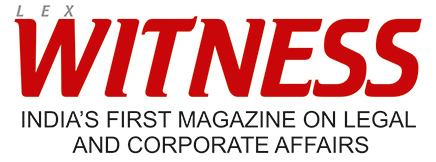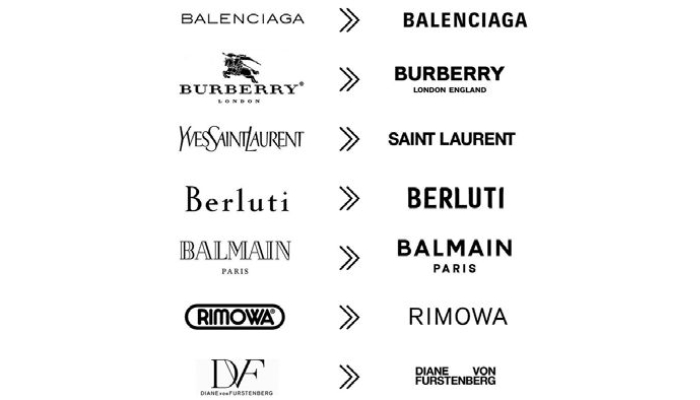
or

Quiet Luxury also known as stealth wealth is a trend that has gained more prominence than ever before and shows no signs of fading. It revolves around the idea that less is more and challenges the notion that luxury items must be adorned with conspicuous logos and monograms. In this trend, luxury is understated and subtle, characterized by its emphasis on quality and the absence of overt branding, ensuring that it doesn’t come across as ostentatious or in-your-face but instead, operates discreetly just below the surface. Luxury whispers.
As Vogue quotes “It’s less austere than minimalism but more polished than ‘normcore and its mostly logo less”
Mark Zuckerberg, the billionaire, is rarely seen sporting monograms or logos that overtly signify luxury. Nevertheless, he frequently makes a fashion statement by donning logo-free garments from brands like Loro Piana and Brunello Cucinelli.
There has been a paradigm shift in the mindset consumers. They are now opting for understated, high-quality pieces with an investment perspective, rather than succumbing to fad fashion. In this light, the luxury brands have had to reposition themselves, offering products that are devoid of conspicuous logos or, more frequently, adopting a standard sans-serif typeface. This change is seen as an improvement in terms of clarity and readability, contributing to a more modern and versatile appeal. The simplicity of this font choice allows these brands to serve as a blank canvas, ready to adapt to rapidly evolving trends without being bound by specific logos or monograms. This concept is further elaborated below:
Counterfeiting is a form of intellectual property theft. Businesses are selling products which at first blush seem to be luxury items but in reality, are just knock-offs sold with the intend to dupe consumers into buying counterfeit products. In an alternate scenario, numerous buyers have no second thoughts about buying an imitation fashioner thing rather than purchasing a relatively cheaper brand. With the rise of luxury brands and the escalated want of consumers to own one, consumers have indulged into buying counterfeit products. In this regard, it is essential for brands to protect their intellectual property.
The market for luxury goods is tightly entwined with the protection of trademarks, a preference for the selective system of distribution, and a strong defence of the brand’s commercial identity
In most cases, luxury brands may be synonymous with their well-known word marks, logos, and famous monogram prints, but research suggests that colour and shape of products can play a vital role when it comes to consumers’ purchasing decisions. There are various prominent source-identifying elements such as shape and colour apart from logos and monograms which have helped the brands garner tremendous goodwill and draw the attention of consumers at large.
A trademark is important to all brand owners because it gives them the chance to uphold and defend the reputation and brand image. Intellectual Property and fashion have been inextricably linked and has helped brands to protect their brand image and value.
Given below is a table of the famous brand Gucci securing trademark registration for its colour, name, monogram and logo.
With the emerging trend of quiet luxury and brands going logo-less, the question that arises is how to battle counterfeit products which do not have any logo or monogram depicted on them. The conundrum which is to be seen and understood is that the brands can still protect its intellectual property by seeking registration for its signature colour and shape.
In cases where a singular colour gains and exhibits inherit substantial value or acquired substantial value, there is no explanation why it should not be treated as a trademark. Brands have made a prudent effort to seek protection for their distinct signature colours.
A significant legal precedent in this context was set by the Supreme Court of the United States in the case of Qualitex Co v Jacobson Products Co Inc. This case recognized and granted protection to a single-colour trademark, specifically the green-gold colour mark used by Qualitex for its dry cleaning press pads.
An exemplary illustration of this practice is the luxury jewellery retailer Tiffany & Co, with a history spanning over a period of 186 years. Tiffany & Co has adopted the iconic robin’s egg blue colour as its signature. This exclusive colour has a unique ability to capture consumers’ attention and establish a strong association between the colour and the Tiffany & Co brand. The colour has proven to serve as a source identifier and adds specific value to Tiffany & Co. To safeguard this distinct hue, the brand has obtained trademark registration for its signature robin’s egg blue colour.
Furthermore, the renowned luxury shoe designer Christian Louboutin has gained a widely recognized reputation for its distinctive Pantone red-coloured soles. The specific Pantone 18-1663TP colour featured in the soles of footwear created and marketed under the prestigious Christian Louboutin brand is subject to robust legal protection.
The renowned shoe maker has often been a part of various Intellectual Property disputes, where the courts have held Louboutin’s single colour to be valid and has prohibited other brands from using pantone red colour on their sole.
On September 5, 2012, the United States Court of Appeals for the Second Circuit, in Christian Louboutin S.A. v. Yves Saint Laurent Am. Holding, Inc., No. 11-3303 (2d Cir. 2012), held that a single colour can be used as a trademark in the fashion industry.
The most iconic and sought after brand, Hermès needs no introduction. Hermès has also gone to great lengths to protect its iconic orange colour and holds registration for the same. Details of which are mentioned below:
The shape of a product or its packaging plays a significant role in influencing consumers’ purchasing decisions. Consumers are often attracted to products with unique shapes that add aesthetic value and help distinguish luxury brands.
In India, the shape of goods and their packaging form a part of trade marks as long as it is capable of being represented graphically and is able to distinguish goods and services of one person from those of another.
A notable example of this is Chanel No. 5, one of the best-selling perfumes globally and a highly sought-after product from the brand. This fragrance has been in use for over a century, and the shape of its perfume bottles is considered as iconic as the perfume itself.
The tremendous success of Chanel No. 5 can be attributed to various factors, with the bottle’s shape playing a significant role. To protect the distinctive and minimalistic transparent bottle, Chanel is currently pursuing trademark registration for the shape of its iconic perfume bottle.
Even, Dior is pursuing trademark registration for its Saddle bag, initially designed in 1999. Following its reintroduction, the Saddle bag has risen to the status of an ‘IT bag,’ challenging conventions in the fashion industry. Its distinct and easily recognizable shape is now closely associated with the Dior brand, making it an iconic and unique design worthy of trademark protection.
Swiss chocolatier Lindt has secured registration for its chocolate gold bunny shape. The Swiss Supreme Court in, Lindtt v Lidl 4A_587/2021 ¬¬¬¬¬¬¬¬¬¬¬¬has ruled that the gold foil-wrapped bunny is a valid and protectable shape, thereby prohibiting other companies from imitating this shape when marketing chocolate products in Switzerland.
The bunny-shaped chocolates have become indelibly linked with Lindt & Sprungli. The unique shape featured in their chocolate products has garnered widespread recognition, and this distinctive shape is safeguarded under trademark law.
Hermès has also gained protection for the shape of the timeless Birkin Bag. It is said that the iconic and ultra luxurious Birkin is often considered a better investment than gold. Its not just a bag, its Birkin! has increased in value by 500 percent in the past 35 years. The shape of the bag holds registration under US registration number 3936105 in class 18 and the description reads as “The mark consists of the configuration of a handbag, having rectangular sides a rectangular bottom, and a dimpled triangular profile. The top of the bag consists of a rectangular flap having three protruding lobes, between which are two keyhole-shaped openings that surround the base of the handles. Over the flap is a horizontal rectangular strap having an opening to receive a padlock eye. A lock in the shape of a padlock forms the clasp for the bag at the center of the strap. The broken lines in the drawing represent the location of the handles and are not part of the mark”
Bottega Veneta’s recent rebranding serves as a compelling case study illustrating the evolving trend among luxury brands to adopt a logo-less aesthetic. The brand’s products are distinguished not only by their exceptional craftsmanship and functionality but also by their deliberate lack of visible logos and monograms. Despite this departure from traditional luxury branding, Bottega Veneta has managed to create significant waves within the fashion industry.
This luxury Italian fashion brand is actively working to secure its logo-less products and protect its brand image through the strategic use of Intellectual Property Rights. An important milestone in this endeavour is the successful acquisition of trademark protection for its exquisite and one-of-a-kind weave design. Over time, this trademark has become a recognizable source indicator for Bottega Veneta’s products, further establishing the brand’s unique identity and ensuring consumer trust and authenticity.
This paradigm shift towards “quiet luxury” has empowered luxury brands to shift their focus beyond the traditional safeguarding of logos and monograms. Brands are now placing greater emphasis on protecting colours and shapes as key elements in their brand identity. Specific colours associated with a particular brand have started to serve as cues for brand recognition. The strategic use of colours and shapes has gained significant attention and proven to be a potent and effective means of creating brand identification, ultimately shaping consumers’ perceptions and choices.
Mehak Bhambri assists her senior colleagues at the firm with trademark prosecution. She believes that a holistic approach towards the discipline of law, coupled with a tenacious approach towards work, is the way forward. She has made a conscious effort to grasp the various dimensions of the legal process through diverse internships, including law firms, independent counsel, and the judiciary. She has co-authored articles for Live Law on position marks and The Daily Guardian.

Lex Witness Bureau

Lex Witness Bureau

Lex Witness Bureau

For over 10 years, since its inception in 2009 as a monthly, Lex Witness has become India’s most credible platform for the legal luminaries to opine, comment and share their views. more...
Connect Us:


The Grand Masters - A Corporate Counsel Legal Best Practices Summit Series
www.grandmasters.in | 8 Years & Counting
The Real Estate & Construction Legal Summit
www.rcls.in | 8 Years & Counting
The Information Technology Legal Summit
www.itlegalsummit.com | 8 Years & Counting
The Banking & Finance Legal Summit
www.bfls.in | 8 Years & Counting
The Media, Advertising and Entertainment Legal Summit
www.maels.in | 8 Years & Counting
The Pharma Legal & Compliance Summit
www.plcs.co.in | 8 Years & Counting
We at Lex Witness strategically assist firms in reaching out to the relevant audience sets through various knowledge sharing initiatives. Here are some more info decks for you to know us better.
Copyright © 2020 Lex Witness - India's 1st Magazine on Legal & Corporate Affairs Rights of Admission Reserved